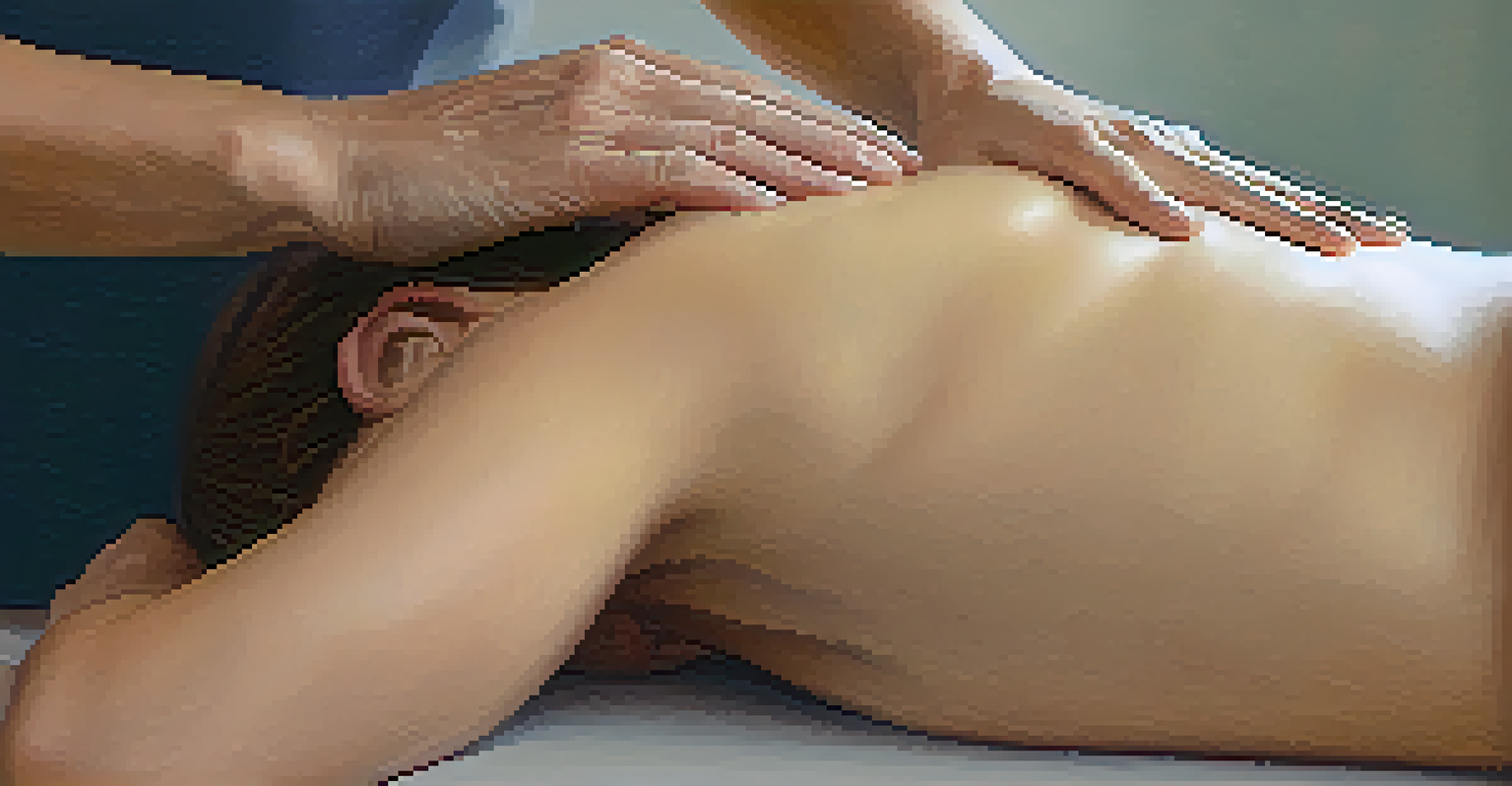The Role of Physical Therapy in Chronic Pain Relief Strategies

What is Chronic Pain and Its Impact on Life?
Chronic pain is defined as pain that lasts longer than three months, often persisting even after the initial injury has healed. This condition can significantly affect daily activities, leading to physical limitations and emotional distress. Many individuals find themselves in a cycle of pain, frustration, and decreased quality of life.
Pain is inevitable. Suffering is optional.
Moreover, chronic pain can lead to secondary issues such as anxiety and depression, creating a complex web of challenges for those affected. It’s not just about the physical sensation; it can disrupt sleep, social interactions, and overall well-being. Understanding the multidimensional nature of chronic pain is essential for effective treatment.
As patients search for solutions, many turn to various strategies, and one of the most promising options is physical therapy. This approach offers a holistic method to address both the symptoms and underlying causes of chronic pain.
How Physical Therapy Works in Pain Management
Physical therapy (PT) involves a tailored program of exercises, modalities, and hands-on techniques designed to improve movement and function. By focusing on strengthening muscles, enhancing flexibility, and improving posture, PT helps alleviate pain while promoting recovery. This proactive approach allows patients to take control of their health.

Additionally, physical therapists assess individual conditions and develop personalized treatment plans. These plans often include manual therapy, therapeutic exercises, and education on body mechanics. The goal is not only to relieve pain but also to empower patients with the knowledge and skills needed to manage their condition effectively.
Through consistent sessions, individuals often notice a reduction in pain levels and an increase in mobility. This progressive improvement can motivate patients to engage in activities they once enjoyed, thus enhancing their overall quality of life.
The Role of Exercise in Physical Therapy
Exercise is a cornerstone of physical therapy, providing both immediate and long-term benefits for chronic pain sufferers. Engaging in a structured exercise program can help strengthen muscles, increase endurance, and improve flexibility. These changes can directly reduce pain and improve functionality.
The greatest discovery of my generation is that a human being can alter his life by altering his attitude.
For those with chronic pain, starting an exercise routine might seem daunting. However, physical therapists guide patients through appropriate activities, ensuring they are safe and effective. They often emphasize gradual progression, allowing the body to adapt without exacerbating pain.
As patients become more active, they often experience not just physical benefits but also psychological boosts. Increased physical activity can lead to improved mood and reduced feelings of anxiety or depression, creating a positive feedback loop in pain management.
Manual Therapy Techniques in Physical Therapy
Manual therapy is a hands-on approach that involves skilled techniques to manipulate muscles, joints, and soft tissues. This method can help relieve pain, reduce muscle tension, and improve circulation. Techniques such as massage, joint mobilization, and myofascial release are commonly used in physical therapy settings.
The immediate effects of manual therapy can often be felt during the session, providing patients with instant relief. Beyond that, regular sessions can lead to long-term improvements in mobility and pain reduction, making it a valuable tool in chronic pain management.
Patients frequently report feeling more relaxed and less restricted after manual therapy, which can enhance their overall treatment experience. This approach complements exercise and education, creating a comprehensive strategy for tackling chronic pain.
Education and Self-Management in Physical Therapy
An essential aspect of physical therapy is education. Patients learn about their conditions, pain mechanisms, and effective self-management strategies. Understanding how to manage pain empowers individuals to make informed choices and take proactive steps in their recovery journey.
Physical therapists often teach patients about body mechanics and ergonomics to prevent exacerbation of pain during daily activities. By integrating these principles into their routines, patients can minimize strain and reduce the risk of future injuries.
Self-management techniques, such as pacing activities and recognizing pain triggers, further equip patients to handle their condition independently. This empowerment fosters a sense of control and can significantly enhance their quality of life.
The Psychological Benefits of Physical Therapy
Chronic pain often has a psychological component, and physical therapy addresses this aspect through both physical and emotional support. By helping patients regain mobility and function, physical therapists can instill a sense of hope and motivation. This positive reinforcement is crucial for mental well-being.
Moreover, the consistent interaction with therapists provides a support system for patients. Sharing experiences and challenges during sessions can reduce feelings of isolation, allowing individuals to connect with others who understand their struggles.
As patients engage in therapy, they often start to see improvements not just in their physical capabilities but also in their mental outlook. A positive shift in mindset can play a vital role in pain management, making physical therapy a holistic approach to healing.
Integrating Physical Therapy with Other Pain Relief Strategies
While physical therapy is effective on its own, it works best when combined with other pain relief strategies. Many patients find that integrating PT with medication, acupuncture, or cognitive-behavioral therapy enhances their overall outcomes. This multi-faceted approach addresses various dimensions of pain.
Collaboration between healthcare providers, including physical therapists, doctors, and mental health professionals, is essential for creating a comprehensive treatment plan. A team approach ensures that all aspects of a patient’s condition are considered, leading to more effective management of chronic pain.

By exploring diverse strategies, patients can find a personalized combination that works best for them. This tailored approach not only maximizes relief but also fosters a greater sense of agency over their health and well-being.